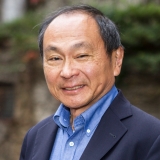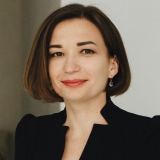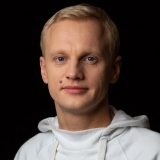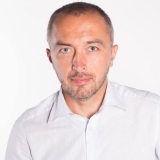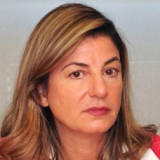The Holodomor: Unpunished Genocidal Evil Returns to Ukrain
90 years ago, the Soviet regime committed what the author of the term "genocide" Rafael Lemkin later called "a classic example of Soviet genocide". No one was punished for the horrific crime of starving millions of Ukrainians to death. Now unpunished evil has returned draped in a different flag cut from the same cloth, and the Russian regime is already committing crimes bearing the signs of genocide. Will it be possible to establish the crime of genocide in the courts of law this time and punish perpetrators – such questions must take centre stage already today.
On November 25, the windows of Ukraine will come alight, illuminated by carefully placed candles. This act is to commemorate the victims of the Holodomor – a purposeful act of destruction of the Ukrainian people. It left one of its main pillars in ruins, starving the bread-growing peasants who held the essential role in preserving national traditions, language and the national spirit as a whole. At the same time, the USSR launched a campaign to exterminate the "brain and soul of the nation": intelligentsia, writers, artists, political and religious figures, in addition to relocating the Russian population to Ukraine in order to disperse Ukrainians and assimilate them.
20 years later, in 1953, Raphael Lemkin, the intellectual father of "genocide", called these acts "a classic example of Soviet genocide, its longest and broadest experiment in Russification – the destruction of the Ukrainian nation". According to Lemkin, Soviet tactics in Ukraine differed from the Holocaust of Jews by Nazi Germany – which could be seen as a classic example of genocide through mass destruction of the population. Instead, the USSR chose the purposeful extermination of a relatively small part of the population – what Lemkin called the "select and determining parts", its religious, intellectual and political leadership – as it sought to destroy the nation as a whole.
For decades, the Holodomor remained in the shadow of impunity, largely due to a campaign of Soviet and later Russian propaganda. Apart from the efforts of Lemkin and the Ukrainian diaspora, few people in the world recalled the Holodomor as a purposeful act of starvation, let alone a genocidal tool aimed at exterminating a nation. The archives of the KGB hid priceless evidence for a long time, and millions of victims of the Holodomor were brushed away as unintended consequences of the process of "class struggle" or "natural disasters". Even today Russia continues to deny and slander the truth about the Holodomor on official levels, in particular excluding its mention in its education programs and libraries in occupied territories of Ukraine.
The perpetrators of the Holodomor were never brought to justice: there were no international institutions to prosecute them, and no domestic trials to uncover the truth were conducted. While there was willingness to bring such trials in Ukraine, procedural bars meant that the criminal case regarding the Holodomor opened in 2009 by Ukrainian law enforcement agencies was eventually closed because the accused persons among the Soviet leadership were dead.
It took Ukrainians decades to tell the world the truth about the Holodomor, and it took the world decades more to hear. Even today, despite the fact that more than 30 countries have recognized the Holodomor as an act of genocide against the Ukrainian people, lawyers and politicians often espouse divergent views on the qualification of the Holodomor as an act of genocide. Expectedly, a significant reason for this are political obstacles, but there are also many legal challenges related to the very demanding definition of the concept of genocide.
Why is proving genocide in the legal dimension so complex?
The established definition of genocide – accepted by the overwhelming majority of the international community in the 1948 Genocide Convention – characterises genocide as acts committed with the specific intent to destroy, in whole or in part, an ethnic, national, racial or religious group by one or several of five prohibited acts.
The prohibited acts are: killing, causing serious bodily or mental harm, creating conditions of life calculated to bring about physical destruction, preventing childbirth, or transferring children from one group to another. The key element is the intent to destroy the group physically or biologically: the destruction of a group’s identity through the erasure of its culture does not in itself constitute the crime of genocide, although in combination with physical or biological destruction it may be a strong indicator of the genocidal intent.
To establish the crime of genocide, there is no need to prove that the elimination of the group was completed, or that the perpetrators sought to exterminate or de facto exterminated every member of the group across the globe. It suffices that the perpetrators seek to destroy a part of the group that is substantial either in number (proportionally significant number of victims relative to the entire group), or in quality (essential for the survival of the group, or an emblematic part of it). The latter can include those considered ‘leaders’ of a group, i.e., those who, due to their particular characteristics or official duties, have a special quality of directing or influencing the actions or opinions of the group.
Such leadership may include political, religious and administrative leaders, scientists, artists and intellectuals, business leaders, defenders of the group (such as the military and law enforcement), and more. A key question will be how such attacks on leaders affected, or could potentially affect, the subsequent fate and survival of the rest of the group (e.g., whether the group was thereby doomed to extinction).
Hence, the commission of genocide does not necessarily always follow the same pattern, which is often associated in mainstream thought with the mass extermination of hundreds of thousands or millions individuals as during the Holocaust or the Rwandan genocide. Genocide can be committed by exterminating a limited portion of a group (for example, the killing of 8,000 men in Srebrenica, Bosnia), so long as such extermination has a substantial effect on the group. This refutes the myths propagated by some scholars, in particular that genocide is defined only by the number of victims and survivors, the significant scale of the crimes or the completeness of the plan to destroy the group. Genocide is not about scope, it is about aim and potential impact towards human groups both large and small.
For a long time, Lemkin’s views on the Holodomor as genocide were rejected, ignored or criticized by the community of international lawyers. However, the legal conclusions above, confirmed by the recent practice of international courts and tribunals, not only allow us to consider the Holodomor and other practices of Soviet terror in a new light, but also to trace their parallels with Russian crimes against Ukrainians that are being committed today.
90 years on, from 1932-1933 Soviet crimes to ongoing Russian atrocities
The targets of Soviet atrocities were often not random people, but carriers of the greatest potential for nation-building movement, whose physical or biological destruction undermined the very possibility of the further survival of the Ukrainian nation as such. Those included not only intelligentsia, artists, writers, academics and clergy as a core emblematic part of the nation but also the peasantry who were the main guardians of the national spirit, traditions, language and culture and could form a leading force in the Ukrainian national aspirations. In conjunction with this, massive measures of Russification were deployed to erase Ukrainian culture and other signs of separate identity, which accompanied and/or contributed to the campaign of physical and biological extermination. If brought to full completion, such aims would have left the country ‘Ukrainian’ in name only.
The clear direction of the Holodomor and other components of the Soviet terror as aimed towards emblematic parts of the Ukrainian national movement and/or its potential is an important indicator of the Soviet crimes’ genocidal character.
Reinterpreting the past through this lens also allows us to look in a different light at the ongoing Russian crimes that we see today. The practice of major international tribunals has systematically relied on utilising historical patterns to structure understanding of modern crimes. Mobile Justice Teams of Global Rights Compliance assist Ukrainian authorities in documenting and investigating Russian crimes both in Kyiv and in the regions. Many cases expose a logic similar to the Soviet one: directing brutal crimes against categories that are especially symbolic for the Ukrainian nation or necessary for its survival as a separate group: activists, volunteers, community leaders, local politicians, veterans, law enforcement officers, educators and, more broadly, on any persons who clearly or indirectly demonstrate their pro-Ukrainian identity and support for the idea of Ukrainian statehood and nationhood.
Russian tactics seem merely to be an adopted and adapted Soviet methodology directed at a similar result. The subjugation of Ukrainians, the physical or biological extermination of those who form the basis of the national group, the erasure of the identity of the rest of the group through attacks on the Ukrainian language and culture, and, ultimately, the eradication of the Ukrainian national idea and those who support it. Such tactics may point to the intent to destroy the Ukrainian national group, i.e., intent to commit genocide, and thus warrant further investigation.
What we can do today to hold perpetrators to account
Decades of silence about Soviet crimes, including the Holodomor, and the impunity of their instigators and perpetrators has created an environment auspicious to a repetition of crimes by Russia. However, unlike the silence of the past, today Ukraine and the victims of atrocities are able to raise their voices in real time to address the whole world. More than ever in its history, Ukrainian society is able to listen and talk about the Holodomor, about the trauma that has been transmitted through generations, and the echoes of which descendants feel today, especially in the areas where food, water and other objects necessary for survival are once again targeted for attack. More than ever in history, the world is ready to listen to the voice of Ukrainians, both alive and dead.
Today, the Ukrainian State and its society are able to do what was never possible for the victims and survivors of the Holodomor: collect evidence of the commission of crimes and listen to the stories of the victims in real time, in order to eventually bring the perpetrators to justice. The Office of the Prosecutor General has opened criminal proceedings on the crime of genocide, and hundreds of prosecutors and investigators from the Security Service and the National Police are documenting vast amounts of evidence with the support of civil society organizations and international partners. Today, international cooperation further allows for the gathering of evidence relevant for crime of genocide outside the territory of Ukraine and permits its use in foreign courts, when and if the appropriate moment comes.
There should be no illusions as we embark upon this path. The process of establishing the truth and holding perpetrators accountable will take years, if not decades. It will require processing tens of thousands of episodes throughout Ukrainian territories affected by the war, interviewing thousands upon thousands of witnesses and victims. By the time the first cases make it to the courtroom, many criminals will be dead or hiding from justice for the rest of their days. One must also be ready to accept that the investigation may lead to different scenarios: the crime of genocide can equally be established or disproved, and may be present in certain cases, but absent in others. However, this should not be seen as an obstacle: the search for evidence related to genocide is a necessary process in establishing the truth about the real nature of Russian crimes.
It is often said that modern world history knows no cases of "successful" genocide towards an entire group. Perpetrators of genocide have seemingly never succeeded in fully exterminating a group in whole. But we must remember thanks to whom Russian crimes have not reached even greater scale today. The Armed Forces of Ukraine have stopped and are continuously keeping the Russian onslaught from spreading further. Investigations into genocide often ask not only what happened, but what would have happened if the perpetrators had not been stopped. After the horrific scenes in Bucha, Kherson and other occupied territories, Ukrainian society and the world can imagine how the scale of Russian crimes would grow exponentially if the Russian forces succeeded in gaining more control over the Ukrainian territories.
Engaging in such an exercise requires less hypotheticals than we may think, once we see the very nature of contemporary atrocities reflected in past horrors. The Soviet Holodomor and the terror against the Ukrainian nation serve as a reminder of how bloodthirsty evil comes back if it is not stopped and punished. Therefore, the memory of the victims of the Holodomor and Soviet terror is not only a tribute to the past, but a key to understanding the events of the present. And in memory of the victims of crimes both 90 years ago and today, it is our common duty to do everything to face the evil with justice. Justice that the victims of the Holodomor never received, but that is now in our grasp today, so that no voice is lost and no one is forgotten.
This article was produced with valued contributions and support from Jeremy Pizzi, Legal Advisor with Global Rights Compliance.

